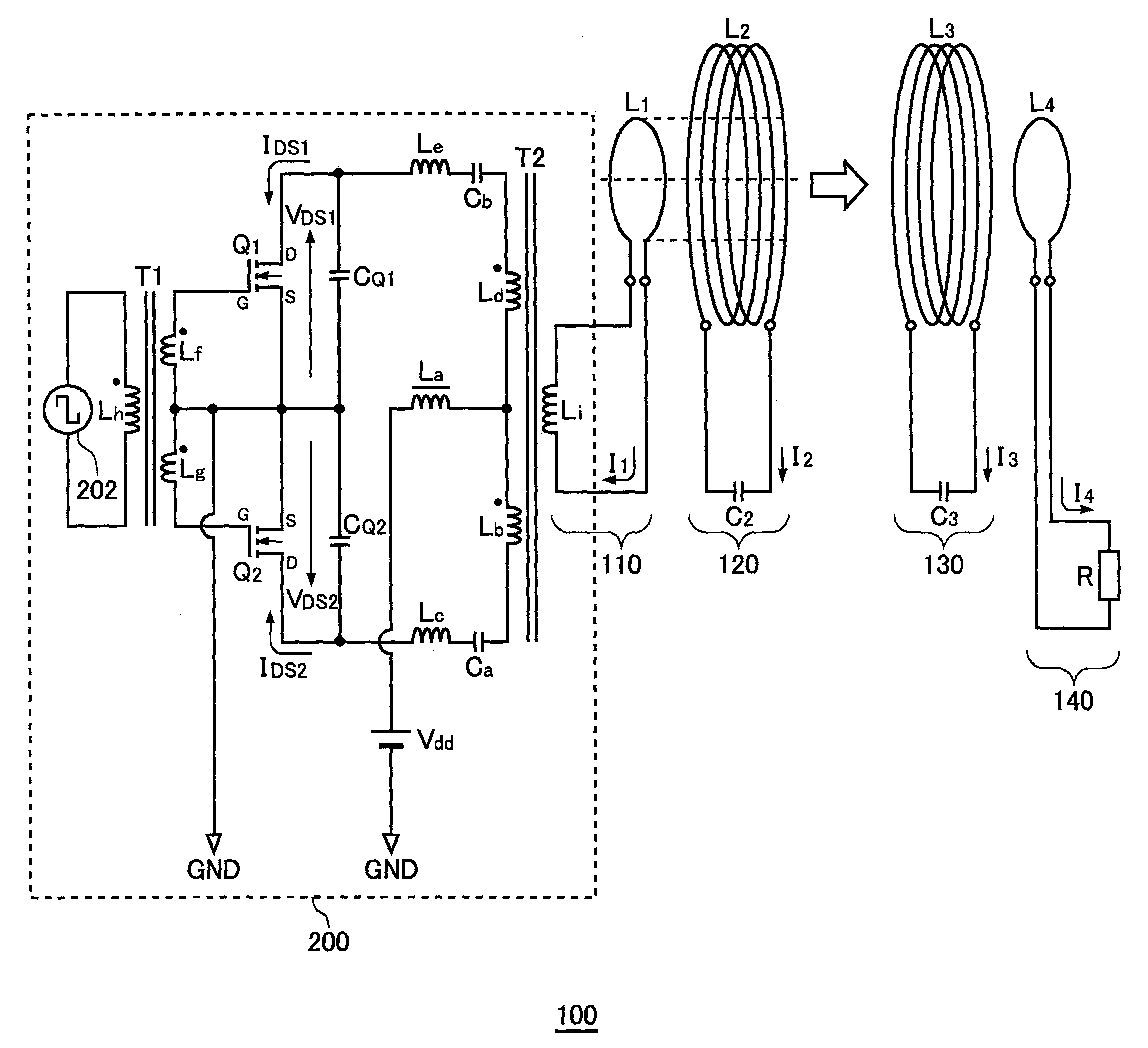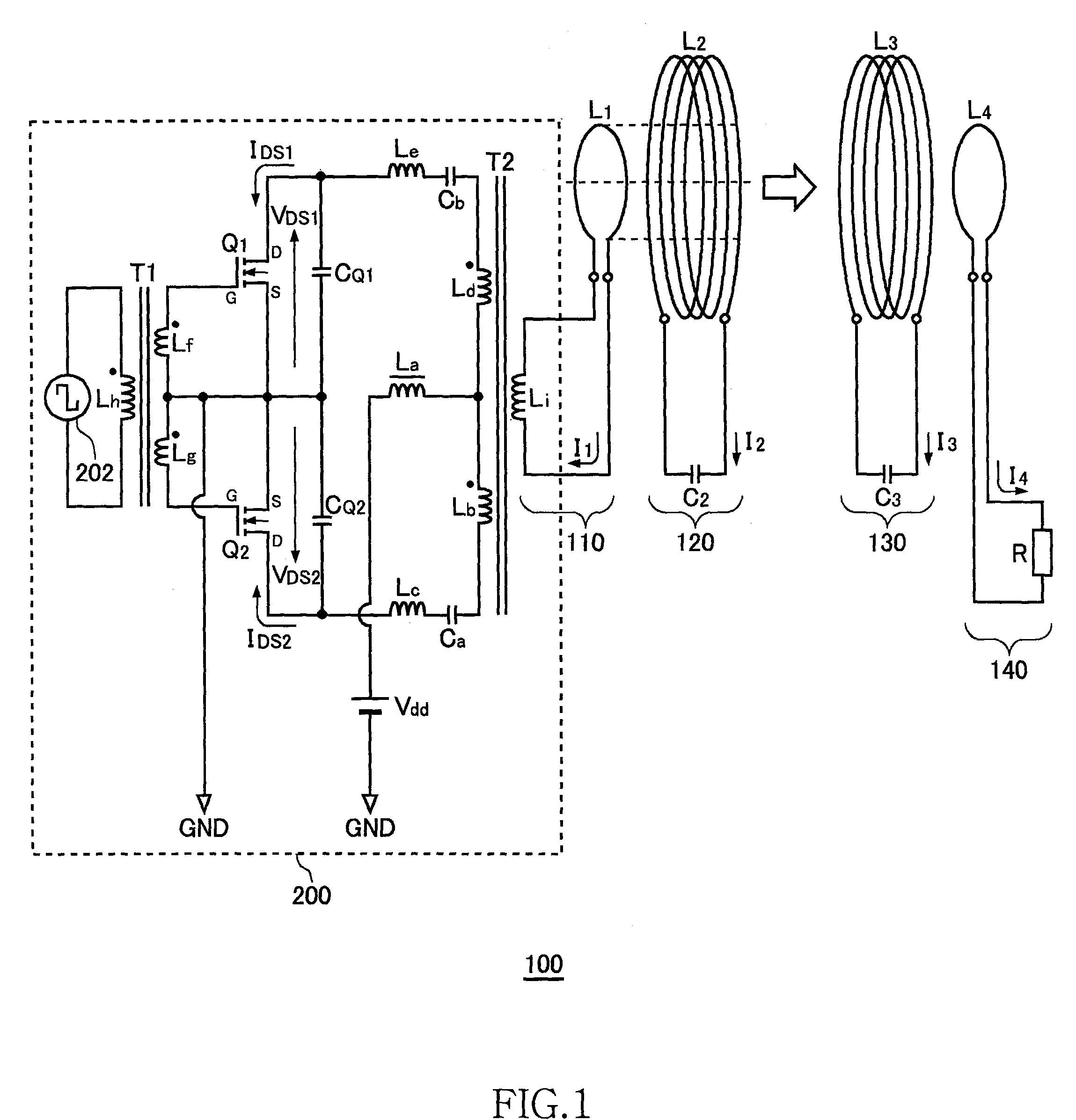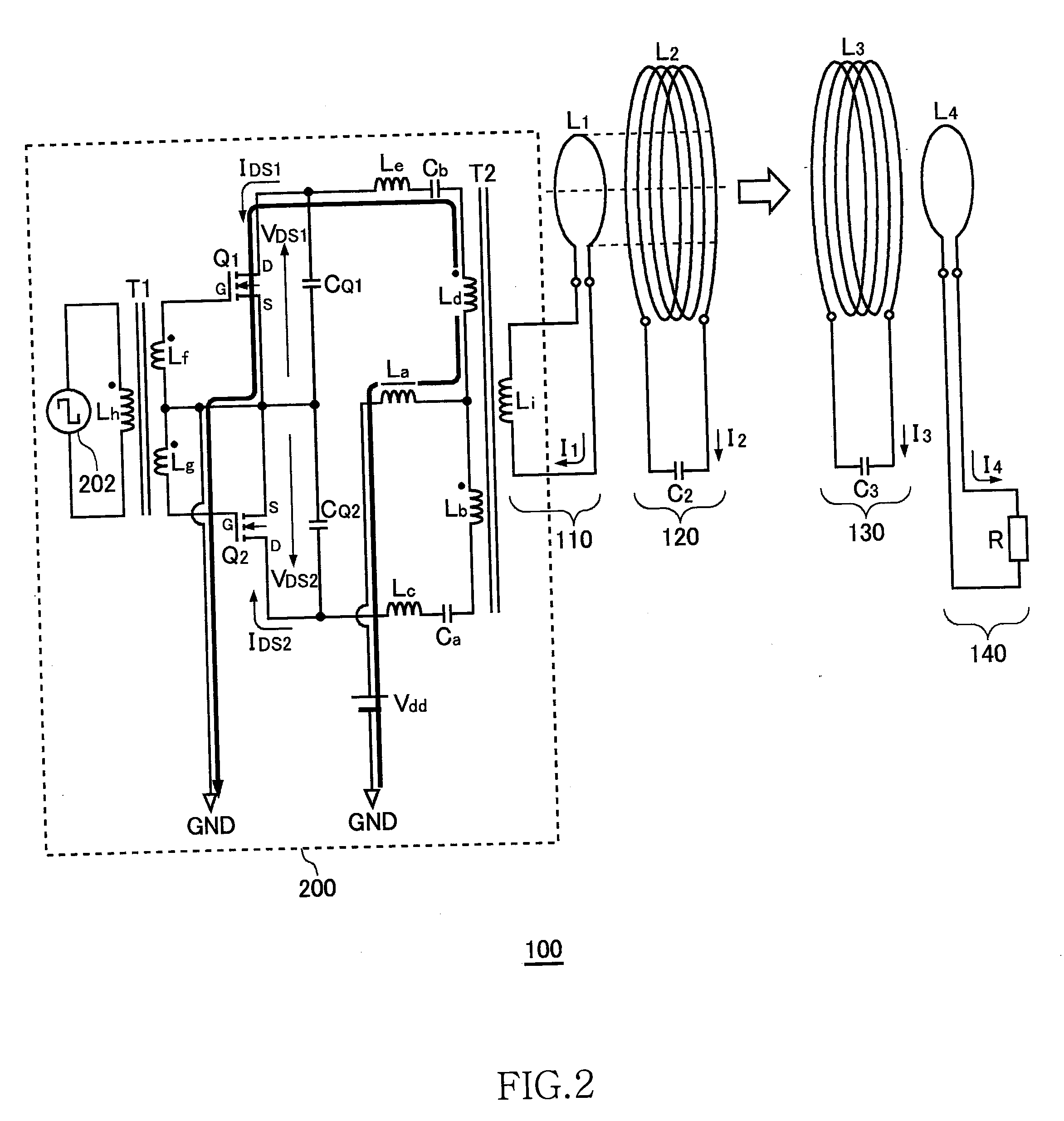Wireless power feeder and wireless power transmission system
a technology of wireless power transmission system and wireless power feeder, which is applied in the direction of electromagnetic wave system, transformer, inductance, etc., can solve the problem of not being able to feed big electric power, and achieve the effect of suppressing the influence of resonance characteristics
- Summary
- Abstract
- Description
- Claims
- Application Information
AI Technical Summary
Benefits of technology
Problems solved by technology
Method used
Image
Examples
first embodiment
Push-Pull Type
[0066]FIG. 1 is a system configuration view of a wireless power transmission system 100 without automatic drive frequency tracking function. The wireless power transmission system 100 includes a power circuit 200, an exciting circuit 110, a feeding coil circuit 120, a receiving coil circuit 130, and a loading circuit 140. A distance of several meters is provided between the feeding coil circuit 120 and receiving coil circuit 130. The wireless power transmission system 100 mainly aims to feed power from the feeding coil circuit 120 to receiving coil circuit 130 by wireless.
[0067]The wireless power transmission system 100 illustrated in FIG. 1 is assumed to operate at ISM (Industry-Science-Medical) frequency band. The following description will be made assuming that the resonance frequency fr of the feeding coil circuit 120 or receiving coil circuit 130 is 13.56 MHz within the ISM frequency band.
[0068]The exciting circuit 110 is a circuit in which an exciting coil L1 and...
second embodiment
Half-Bridge Type
[0118]FIG. 13 is a system configuration view of a wireless power transmission system 1100 according to a second embodiment. The wireless power transmission system 1100 includes, as basic components, a power circuit 1200, a receiving coil circuit 1130, and a loading circuit 1140. Further, the wireless power transmission system 1100 includes, as components for automatically adjusting the drive frequency fo, a first waveform rectifier 1142, a second waveform rectifier 1144, a phase detection circuit 1150, and a drive frequency tracking circuit 1152. The power circuit 1200 further includes a feeding coil L2. A distance of several meters is provided between the feeding coil L2 and receiving coil circuit 1130. The wireless power transmission system 1100 mainly aims to feed power from the feeding coil L2 to receiving coil circuit 1130 by wireless. The wireless power transmission system 1100 according to the second embodiment is assumed to operate at around 100 kHz. Thus, th...
third embodiment
Half-Bridge Type
[0168]FIG. 26 is a system configuration view of a wireless power transmission system 1106 according to a third embodiment. In the wireless power transmission system 1100 according to the second embodiment, the oscillator 1202 directly drive the feeding coil L2; while in the wireless power transmission system 1106 according to the third embodiment, the oscillator 1202 does not drive the feeding coil L2 but drives the exciting coil L1. The other components of the wireless power transmission system 1106 are the same as those in FIG. 13, etc. Components designated by the same reference numerals as those of FIG. 13, etc. have the same or corresponding functions as those in FIG. 13, etc.
[0169]A power circuit 1204 feeds AC power to the exciting coil L1 at the resonance frequency fr. The exciting coil L1 and capacitor C1 constitute a resonance circuit of the resonance frequency fr. A feeding coil circuit 1120 is a circuit in which the feeding coil L2 and capacitor C2 are con...
PUM
 Login to View More
Login to View More Abstract
Description
Claims
Application Information
 Login to View More
Login to View More - R&D
- Intellectual Property
- Life Sciences
- Materials
- Tech Scout
- Unparalleled Data Quality
- Higher Quality Content
- 60% Fewer Hallucinations
Browse by: Latest US Patents, China's latest patents, Technical Efficacy Thesaurus, Application Domain, Technology Topic, Popular Technical Reports.
© 2025 PatSnap. All rights reserved.Legal|Privacy policy|Modern Slavery Act Transparency Statement|Sitemap|About US| Contact US: help@patsnap.com



